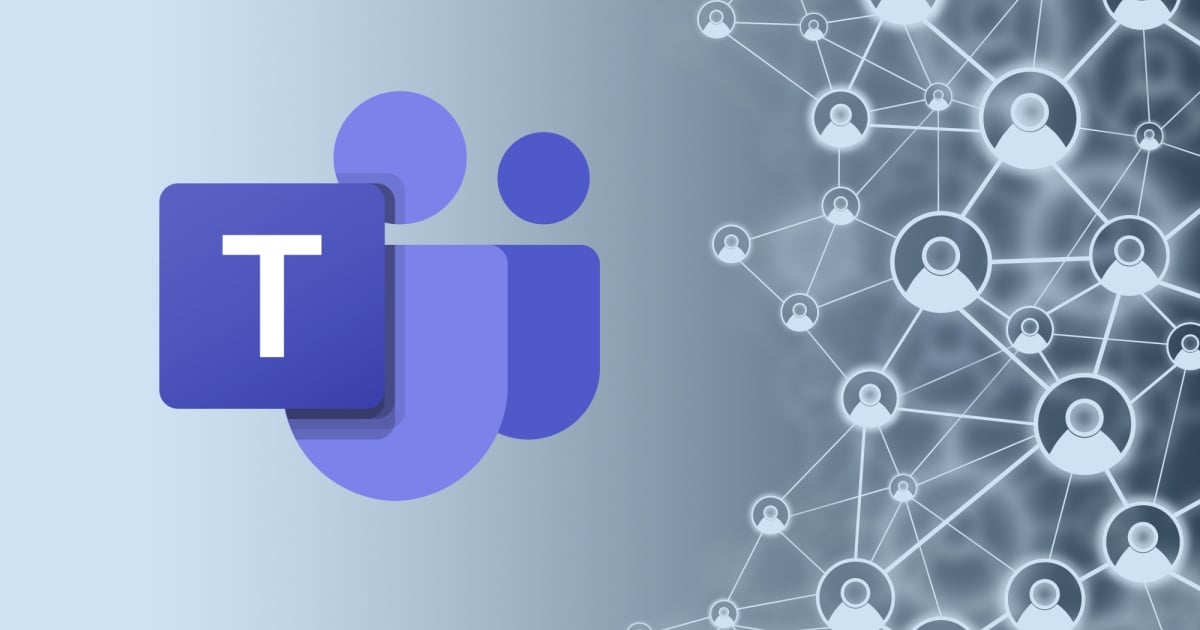Businesses' adoption of software-as-a-Service (SaaS) has exploded in recent years. In 2025, the vast majority of businesses will rely on at least one SaaS platform to support daily operations.
Reliance on core SaaS platforms, such as Microsoft 365, Google Workspace and Salesforce, continues to rise as they become integral to everyday business operations, enabling collaboration, scalability and remote productivity. However, this accelerated shift to the cloud has also exposed a critical gap — a large proportion of these businesses still lack comprehensive backup strategies for their critical SaaS data.
Without a robust backup plan, businesses risk data loss and downtime that could result in operational disruption, compliance violations, legal issues and heavy financial losses. For managed service providers (MSPs), this widespread oversight presents a great opportunity to strengthen client protection while unlocking a valuable recurring revenue stream.
In this article, we’ll discuss cloud data vulnerabilities, the critical role of SaaS backups and how MSPs can take advantage of this unique opportunity to reinforce their role as strategic IT partners while boosting their bottom line.
Cloud adoption grows — but so do data risks
Cloud-based SaaS applications offer multiple benefits to businesses of all sizes, from digital transformation to flexibility, scalability and cost efficiency. For small and mid-sized businesses (SMBs) and enterprises alike, cloud adoption is no longer a matter of "if " but "how fast. "
Today, SaaS and public cloud workloads dominate the IT landscape. More than 50% of workloads currently run in the cloud, and this figure is projected to rise to over 60% within the next two years. While these platforms hold large volumes of business-critical data, MSPs consistently report that over a third of their clients continue to rely solely on the native data retention tools offered by cloud vendors. The built-in tools offer some sort of protection against data loss; however, their capabilities are limited in scope. These native tools are designed to recover from infrastructure issues, but not from human error, cyberattacks or intentional deletion.
The situation is further exacerbated by businesses' lack of confidence in their backup solution’s ability to recover lost data during a crisis. According to The State of SaaS Backup and Recovery Report 2025 , only 40% of businesses have confidence that their existing backup solutions would adequately protect critical SaaS data if disaster struck. Additionally, 30% of businesses haven’t updated their solutions in more than five years.
For MSPs, this is both a challenge and a massive opportunity. By educating clients on the shared responsibility model in cloud environments and highlighting the benefits of third-party backup solutions that go beyond basic retention, MSPs can close the data protection gap, reduce client exposure to evolving risks and enhance their service portfolio.
What’s keeping MSPs up at night?
While the MSP market continues to grow, profitability remains a huge concern. The State of the MSP Industry 2025 Look Ahead report revealed that more than 60% of MSPs achieved revenue growth in the past year. However, that growth isn’t translating into profits for MSPs. In fact, 91% of MSPs identified profitability as one of their top business concerns, while 63% said it’s their number one business priority.
Several factors are driving this profitability pressure. Rising operational costs due to increased staffing needs, investments in new toolsets and the impact of customer churn are straining MSPs. Despite these challenges, many MSPs are leaving money on the table by underutilizing high-margin, low-overhead services, such as SaaS backup.
SaaS backup is a scalable, recurring revenue service that addresses client needs for data protection, business continuity and compliance – and MSP margin pressure. Leading MSPs are already capitalizing on this opportunity, with more than 60% currently offering third-party SaaS backup services to clients.
MSPs that don't offer SaaS data protection services put themselves at risk of:
Higher costs: Increased support costs from managing avoidable incidents like accidental data loss or ransomware attacks.Losing client trust: Your clients in regulated industries could face compliance risks, which can erode trust and jeopardize long-term contracts.Getting lost in the crowd: Missed opportunities to differentiate in a crowded market where clients are looking for proactive, value-driven IT partners.
In a competitive business landscape, managing cost structures and enhancing margins are critical for a business’s survival.
SaaS backup is not optional — Here’s why
With businesses of all sizes accelerating their move to the cloud, SaaS platforms have become high-value targets for both internal and external threats. The State of BCDR Report 2025 revealed that more than 50% of businesses have experienced malicious deletion of SaaS data, with incidents almost evenly split between insider threats and external cyberattacks.
The report also revealed a striking gap between expectations and actual outcomes when it comes to recovering from downtime events. In the survey, more than 60% of respondents believed they could recover in under a day; however, in reality, only 35% could. Additionally, more than 35% of organizations said it takes them days or even weeks to recover lost SaaS data. Alarmingly, 2% of respondents said their organizations wouldn’t be able to recover their lost data at all.
Despite these risks, a large number of businesses using SaaS solutions don’t have a comprehensive SaaS backup strategy. According to the State of BCDR Report 2025, only 70% of Microsoft 365 users and just over 60% of Google Workspace users currently have a backup strategy in place. That leaves a significant portion of businesses exposed to data loss, downtime, business disruption and cyber-risks.
The shared responsibility model: A common misconception
Many businesses using SaaS applications lack clarity about the cloud's shared responsibility model. They wrongly assume that cloud service providers (CSPs) protect all their data. As per the shared responsibility model, cloud vendors, such as Microsoft and Google, are responsible for protecting their infrastructure and ensuring application uptime and availability. However, customers are responsible for protecting their data.
Even Microsoft warns that it is not responsible for user-deleted data after the retention period . This means that, once data is permanently deleted, whether intentionally or accidentally, it can't be recovered without a third-party backup solution in place.
For MSPs, educating clients on the shared responsibility model is critical. SaaS backup isn’t just a good-to-have but a necessary service that protects clients from avoidable loss, strengthens security and compliance posture, and ensures business continuity.
Datto SaaS Protection: A strategic growth lever for MSPs
In today’s saturated MSP landscape, SaaS backup can be a strategic differentiator that delivers long-term value for you and your clients. That’s where Datto SaaS Protection can be a game changer for your MSP.
Datto SaaS Protection enables MSPs like you to provide reliable services to your clients while creating a dependable, recurring revenue stream. Datto SaaS Protection helps you:
Unlock recurring revenue with low overhead: Generate reliable recurring revenue streams without incurring the high overhead typically associated with traditional infrastructure services.Reduce support burden with fewer data loss incidents: With Datto SaaS Protection in place, your MSP can significantly reduce support ticket volume by proactively preventing data loss incidents before they happen.Boost client retention with bundled services: Client expectations are rising, and bundled offerings that combine backup, security and other services can help MSPs deliver more value per dollar. When SaaS protection is packaged with other essentials like phishing defense or Microsoft 365 administration, MSPs not only increase their average revenue per user but also strengthen client stickiness. With Datto’s tightly integrated suite of services, your MSP can offer bundled services to improve client retention.
“If you have to tell a client, ‘Oh, sorry, I can’t do anything,’ if data is deleted in Microsoft 365, that’s not an acceptable answer. Not having SaaS Protection is a sign of an immature MSP. Data is so important to customers; as the keeper of that data, you have to be able to protect it.” — Kevin Damghani, ITPartners+
Steps to help MSPs capture the SaaS backup opportunity
Reliance on SaaS apps continues to grow. For MSPs, this presents a massive business opportunity to tighten security, drive recurring revenue and strengthen relationships with clients. Here are four actionable steps to consider that will turn SaaS backup into a key growth driver:
Audit client environments for Microsoft 365 and Google Workspace usage
Assess your clients’ current cloud environments to understand how their data is being used or where potential gaps exist. This will help you identify which clients lack backup coverage and offer tailored data protection services.
Highlight real-world risk scenarios
Your clients may not be aware of or underestimate the threats that lurk in the SaaS world; therefore, it's important to provide a solid foundation for the discussion with relatable examples. Use real-world data breach stories or anonymized case studies to highlight the consequences of not backing up SaaS data, such as:
Malicious insiders deleting files before departure.
Accidental deletions of important files or folders by users.
Ransomware attacks encrypting critical SaaS data.
Leverage compliance and cyber insurance incentives
Industry regulations are constantly evolving, and cyber insurance policies are more difficult to obtain. Today, businesses need strong data protection to meet stringent regulations or qualify for cyber insurance. Use this as a key reason for positioning SaaS backup as a business necessity.
Bundle with co-managed services for larger clients
For larger clients, especially those with hybrid teams or in-house IT, SaaS backup can be a key part of a co-managed service offering. Hybrid environments increase IT complexity and security risks; therefore, rather than selling SaaS backup as a standalone tool, bundle it into a broader support package that includes:
Endpoint protection and device management, or
Microsoft 365 admin services and user provisioning, or
Phishing protection, dark web monitoring and security awareness training.
Don’t just protect — Profit with Datto SaaS Protection
In a cloud-first world, SaaS backup is no longer just a compliance checkbox, but a strategic pillar of every successful MSP’s service portfolio. As businesses increasingly rely on SaaS platforms like Microsoft 365 and Google Workspace to drive critical operations, they expect not just uptime, but resilience, recoverability confidence and proactive protection.
Datto SaaS Protection helps MSPs go beyond basic protection. It empowers you to:
Comprehensively protect your clients from data loss, ransomware, accidental deletions, misconfigurations and insider threats.
Drive recurring revenue through a scalable, low-overhead backup service that strengthens your MSP portfolio and boosts margins.
Stand out in a crowded market by offering integrated, high-value solutions built specifically for MSPs that combine security, backup and business continuity.
The SaaS backup landscape is changing. The only question is: will you lead it?
Don't get left behind. Schedule a live demo of Datto SaaS Protection today
About the author: Angela Chang is a Product Marketing Specialist at Kaseya, where she oversees the SaaS Backup modules, including Datto SaaS Protection and Spanning. Since joining Kaseya in 2022, Angela has built a strong foundation in client success and business growth, beginning as an Associate Account Manager, advancing to Senior Account Manager of Key Accounts, and ultimately transitioning into Product Marketing. Prior to joining Kaseya, Angela worked as a trusted Personal Banking Associate at TD Bank, where she leveraged her customer-first mindset and financial acumen to help clients meet their personal and business goals. She holds a Bachelor of Commerce in Marketing from the University of British Columbia.
Edited by
Erik Linask






